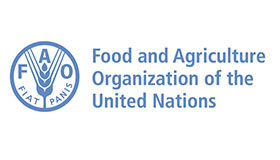Papua New Guinea
REDD+ Safeguards Information System
In REDD+, "safeguards" are measures to prevent negative environmental and social impacts, protect biodiversity, and uphold the rights of indigenous peoples and local communities.
Overview of the REDD+ SIS
Overview of the REDD+ Safeguards Information System for Papua New Guinea
In 2020, the Government of Papua New Guinea (GoPNG) established (NEC Decision No. 343/2020) the REDD+ Safeguard Information System (SIS) Framework that outlines the SIS’s objectives, core functions, necessary institutional arrangements and identification of information needs and sources. The SIS was established to ensure that PNG’s implementation of REDD+ comply with the Cancun Safeguards.
The SIS for PNG is a framework established to ensure that REDD+ is implemented in a socially and environmentally responsible manner and aim to ensure that REDD+ actions not only contribute to mitigating climate change but also provide social, environmental, and governance benefits. The SIS aligns with the Cancun Safeguards as outlined in the United Nation Framework Convention on Climate Change (UNFCCC) Decision 1/CP.16 and aims to provide transparent and consistent information on how these safeguards are addressed and respected. The UNFCCC requires that county parties develop a SIS, ensuring consistency of the REDD+ policies and measure (PAMs) with the Cancun safeguards throughout the implementation of REDD+, and the provision of a Summary of Information (SOI) demonstrating how the safeguards have been addressed and respected to the UNFCCC. This is linked to the delivery of the results-based payments from REDD+ PAMs. PNG has since established the SIS, ensuring consistency in policy adherence and submitted the first SOI to the UNFCCC in 2020.
Although there are no official guidelines on how countries are supposed to set up a system for providing information on how safeguards are addressed and respected, Parties to the UNFCCC have agreed on some broad guidance on the characteristics of a SIS. Namely,it should:
- Provide transparent and consistent information that is accessible by all relevant stakeholders and updated on a regular basis;
- Be transparent and flexible to allow for improvements over time;
- Provide information on how all the safeguards referred to in appendix I to decision 1/CP.16 are being addressed and respected;
- Be country-driven and implemented at the national level; and
- Build upon existing systems, as appropriate.


Objectives of the REDD+ SIS
Clarity and Objectives for Effective Implementation of REDD+ in PNG
Knowledge Management
Learning Portal
The SIS Learning Portal aims to share knowledge and create awareness.
Insights
Insightful Quotes

Late Grand Chief Sir Michael Somare
Founding Father and Prime Minister of Papua New Guinea
PNG is ready to act! …We plan to cut emissions between 50-75% by 2030 and become carbon neutral before 2050.

Mr Bir Mandal
Head of Office, FAO Country Office, PNG.
...PNG's biodiversity is under threat and the country is vulnerable to the impacts of climate change therefore collective actions are crucial.
What’s Happening
News & Insights
National REDD+ Development Guidelines (RDG)
Papua New Guinea (PNG) has taken a global lead in…
National REDD+ Free Prior and Informed Consent Guidelines (FPIC)
The FPIC Guidelines give more details on the procedure related…
National REDD+ Benefit Sharing and Distribution Guidelines (BSD)
The BSD aims to ensure effective, transparent, and fair, distribution…
National REDD+ Grievance Redress Mechanism Guidelines (GRM)
The GRM specifically outlined the steps required from intake to…
How SIS Enhances Transparency in REDD+ Projects?
The implementation of a Safeguard Information System (SIS) is essential…
The Role of Indigenous Peoples in Safeguards Implementation: A Key to Sustainable REDD+ Initiatives
The integration of Indigenous Peoples in the implementation of safeguards…
REDD+ SIS Team
Team Members









